Bee specialists like to point out that the yellowjacket is a carnivore and the honey bee is a vegetarian.
They are, indeed. The yellowjacket is an aggressive predator that seeks protein-rich foods for its colony, while the honey bee--usually quite passive unless it's defending its hive--gathers nectar and pollen.
If you've ever watched a yellowjacket invade a honey bee hive or prey upon other insects--or grab a bite of chicken from your barbecue or scavenge rotting fruit--you know how aggressive it is.
We watched a western yellowjacket, Vespula penyslvanica (as identified by Lynn Kimsey, director of the Bohart Museum of Entomology and professor of entomology at UC Davis), forage on a cluster of red-hot pokers along a road leading to Tomales, a tiny town in Marin County.
This wasn't a "red" red-hot poker, though. It was yellow. Varieties of the Kniphofia genus (the genus was named for 18th century German physician/botanist Johann Hieronymus Kniphof) now appear in such colors as orange, coral, cream and yellow.
Rather fitting that a yellowjacket was on a yellow red-hot poker!
We caught it in flight as it headed toward the tubular flowers and watched it grab a few tasty morsels, an unsuspecting spider or two, to carry back to the nest. (It also sips nectar for flight fuel.) When it emerged, it was dotted with pollen grains, so you could say that sometimes it's a pollinator, too. But not a significant one...
The western yellowjacket, native to the western United States, is a major pest in Hawaii, where it was first discovered in 1977. Erin Wilson, a former postdoctoral scholar in the Louie Yang lab in the UC Davis Department of Entomology, studies this social, ground-nesting wasp.
Wilson, who launched the vespularesearch.com website, describes it as a "vacuum cleaner" that wreaks ecological havoc among the native species in Hawaii.
“The introduction of non-native organisms is a leading cause of imperilment of native species,” says Wilson, who has studied the western yellowjackets at two sites: the Hawaii Volcanoes National Park on the island of Hawaii and the Haleakala National Park on Maui since 2004.
Scientists have found that the incidence of perennial or overwintering colonies is higher in Hawaii than in its native range.
Compared to annual colonies, these overwintering perennial colonies can collect twice as many prey items and produce 10 times the worker force, Wilson says. Some perennial colonies are huge, their size linked to Hawaii’s mild climate and the ability of the yellowjackets to establish perennial colonies. How huge? One Maui colony yielded 600,000 individuals. Compare that to a typical California colony of less than a few thousand wasps.
Read the PBS piece about this invasive insect in Hawaii and see it "stinging" the camera lens.
Attached Images:
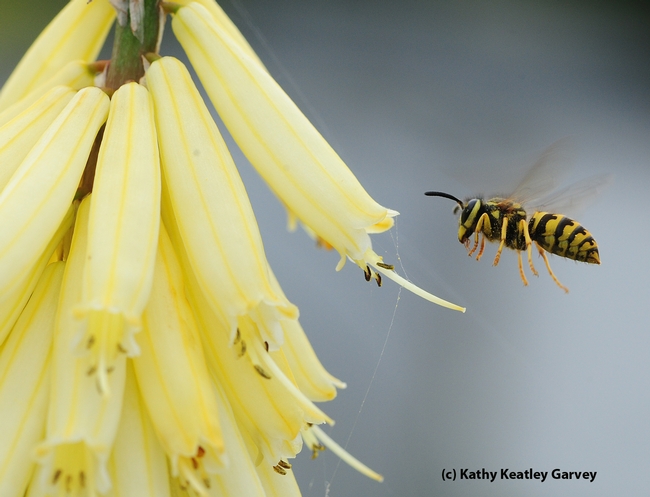
Western yellowjacket (Vespula penyslvanica) heading toward a red-hot poker (but this variety is yellow). (Photo by Kathy Keatley Garvey)
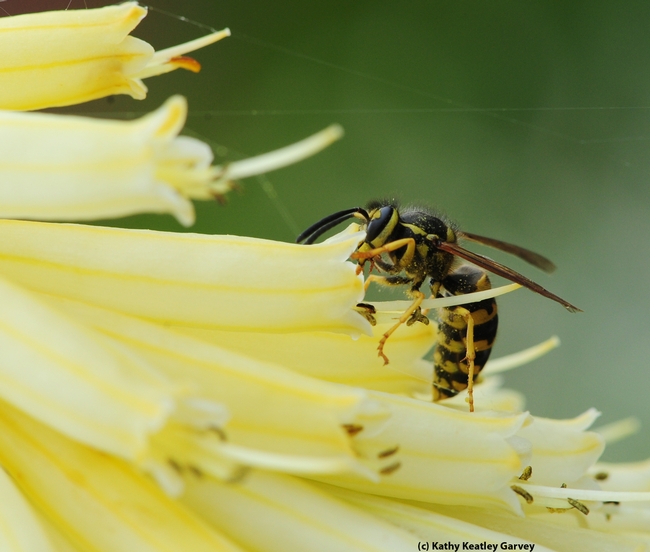
Western yellowjacket buries its head in a tubular flower. (Photo by Kathy Keatley Garvey)
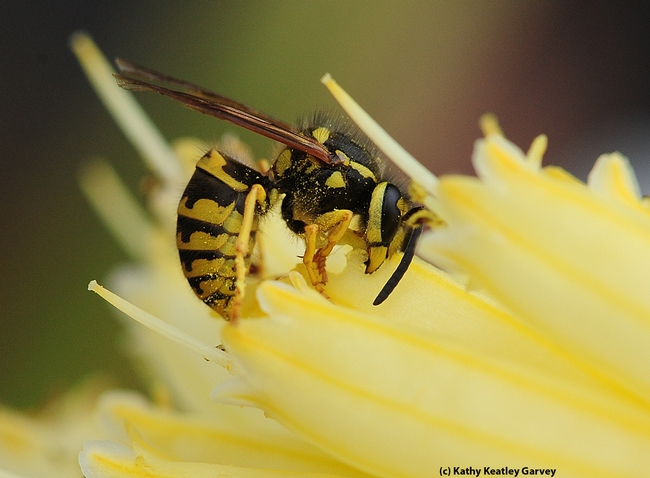
Western yellowjacket foraging. (Photo by Kathy Keatley Garvey)
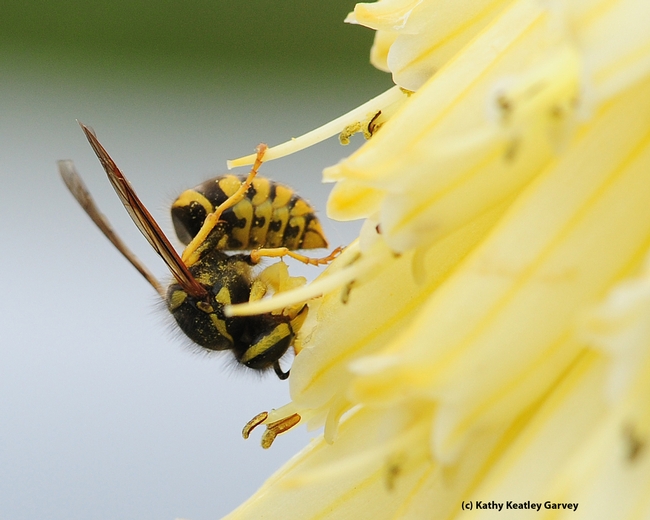
Western yellowjacket assumes the shape of a comma. (Photo by Kathy Keatley Garvey)
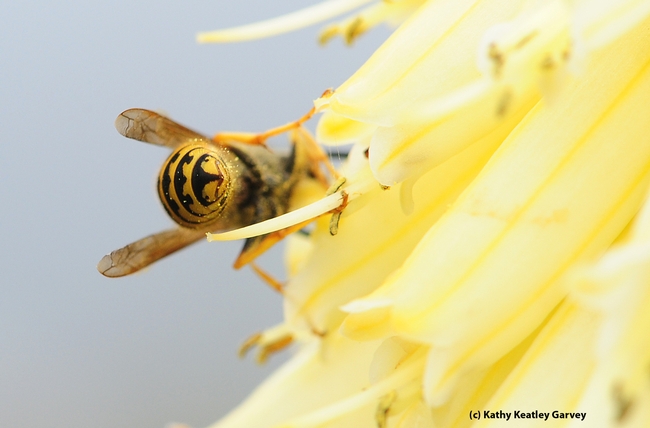
Bottoms up--western yellowjacket moves away from the camera. (Photo by Kathy Keatley Garvey)